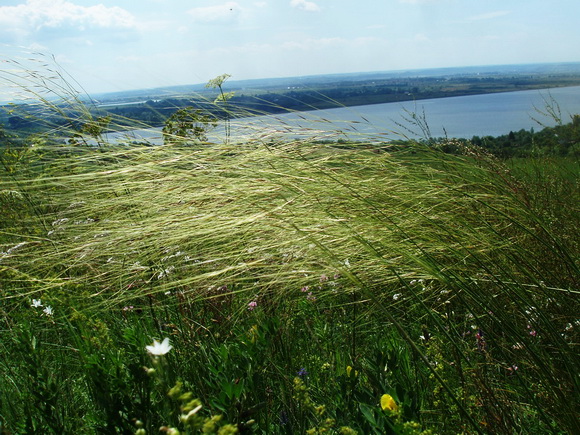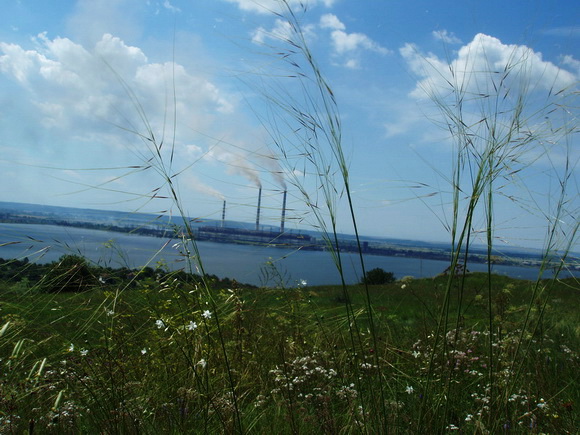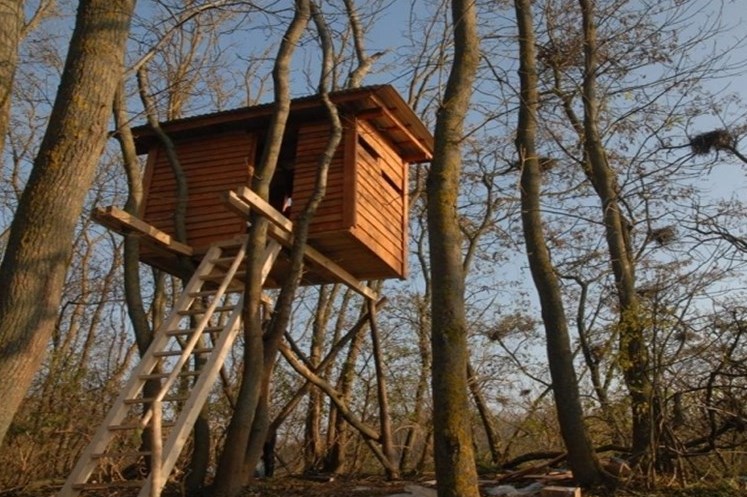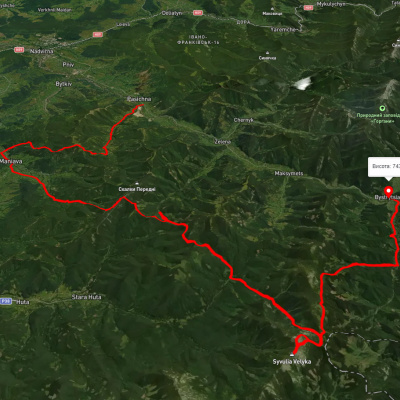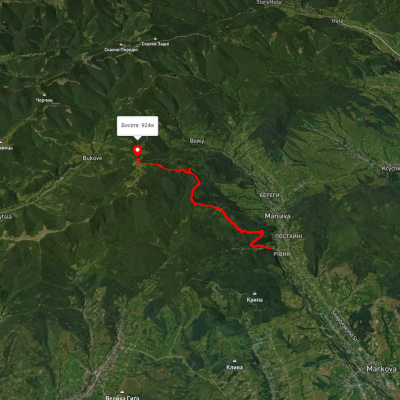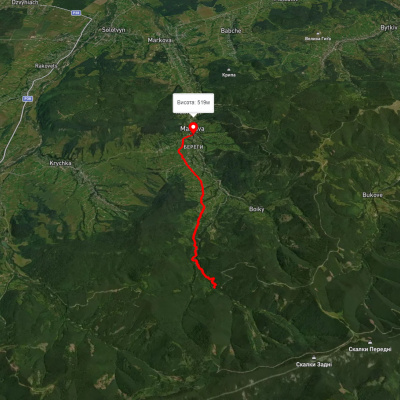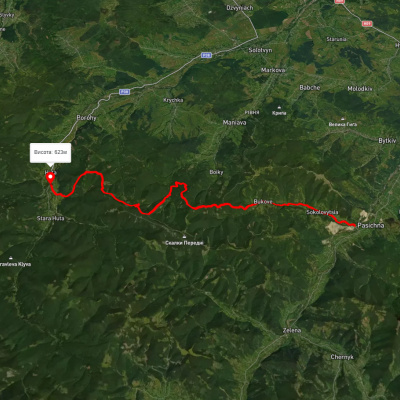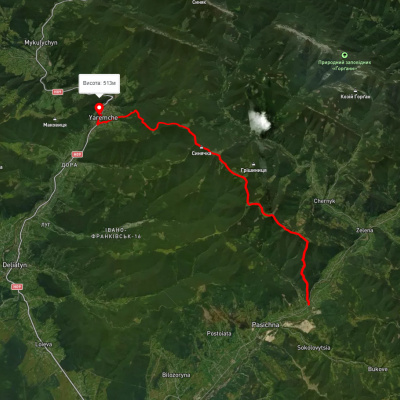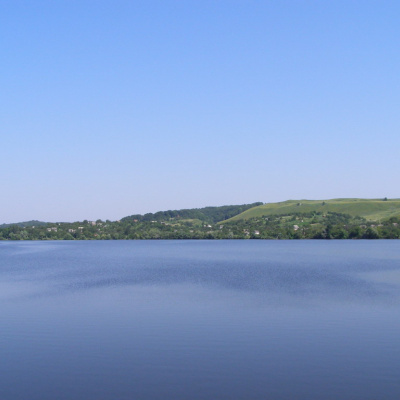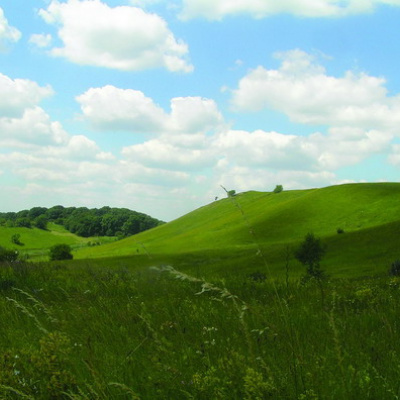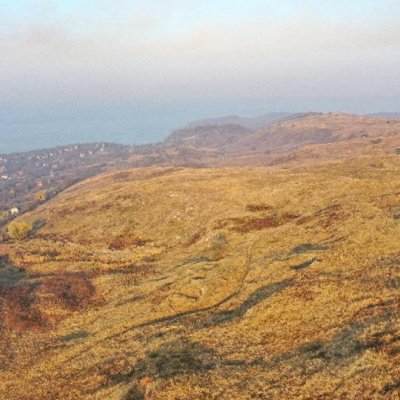on several hills (maximum height - 340 m) adjacent to the Burshtyn Reservoir in
. The area is 65 hectares. Scientists claim that some species of plants from the late Tertiary period have been preserved here. More than 300 species of plants grow in the protected area.
According to one of them, Prince Danylo Halytskyi kept money, gold and jewelry in the mountain's natural caches. Closer to the truth is the version that the Bovshiv boyar hid his treasury in the labyrinths of karst caves. However, the passage to the cave was blocked and as a result, the jewelry and money remained inside the mountain forever, and so it got its name - Kasova.
Some researchers believed that there was an ancient Russian monastery on the plateau, which is located on one of the slopes of the mountain. Some researchers believed that an ancient Russian monastery stood on a plateau located on one of the mountain slopes. Assumptions about its existence are based on a publication in the journal Slovo (1879.- 4.3-6), as well as on topographic and toponymic studies by local historians L. Chachkovsky and J. Khmilevsky. In their book "Prince Halych" they wrote: "On Kasova Hora near Bolshov, there was an ancient monastery of the Order of St. Basil. It was built on the side of the forest, where the mountain ridge is flatter. A hill rose on a semicircular plateau. According to the residents of Boyashiv I, a church once stood on this hill." There were stairs leading to the monastery, the remains of which were discovered in the 1930s. About 30 years ago, a teacher from Bovshov, I. Kalytchuk, wrote the following about Kasova Hora: "Even now there are giant stones, rocks that form caves and shelters. One can often come to places where one can feel a strange emptiness, and even under cautious footsteps the earth rumbles, as if warning the person who came here not to destroy its riches. Both the caves and this unusual feeling are like the first exhibits of a nature exhibition, and there are too many to count."
The greatest value of Kasova Hora is its vegetation. It has long attracted the attention of physicians, botanists, and geologists. The relict grass cover of this part of the Opillia land has been the object of research by about fifty expeditions. Scientists claim that some plant species from the late Tertiary period have been preserved here. Similar plants can be found only in the Askania Nova reserve and the Strelkovo steppe in the Kursk region.
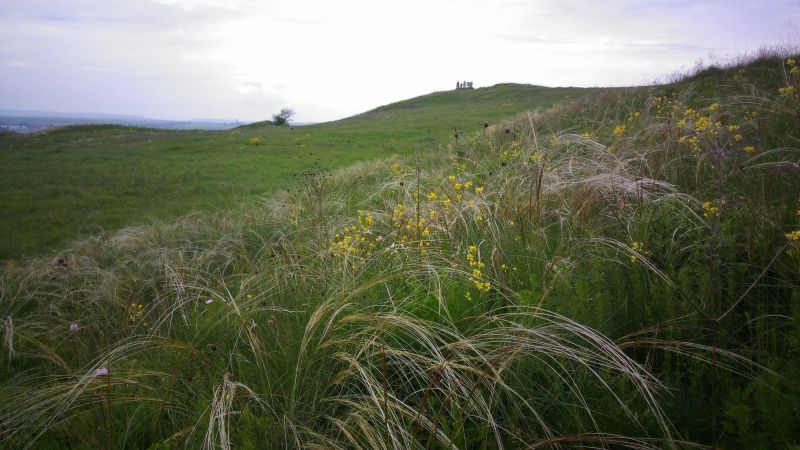
According to the stories of old-timers from the surrounding villages, the rare vegetation has been preserved in this area because the lands of Kasova Hora were not used by peasants for growing crops in the past centuries for some mysterious reason. Perhaps the peasants were scared away by the noise of groundwater. Several springs of clean, cold water in the mountain's thickness indicate their presence. It is possible that it is thanks to the underground rivers that the vegetation of ancient geological epochs has been preserved. In total, more than 300 species of plants grow on Kasova Hora. Among them are such rare relict species as Danish astragalus, common asparagus, Besser's oatmeal, low sedge, Zapalovych's buttercup, spring mountaineer, blackening dream, big dream, Hungarian cockscomb, reddish clover, Ternopil cornflower, dressed thyme, white anemone, long-leaved sugaynik, low almond, and three species of wavy feather grass. About ten plant species are listed in the Red Book of Ukraine. Cherries, dogwood, hawthorn, viburnum, blackthorn, thorns, and rose hips grow in the forest between the mountain and the sea. In summer and autumn, you can pick up boletus, boletus, and mushrooms, and in the meadows you can find morels and mushrooms.
The top of Kasova Hora offers a beautiful landscape - you can see the Transnistrian valley, the Dniester, Halych, Bilshivtsi, the surrounding villages, and the Burshtyn Reservoir. The decision to reserve Kasova Hora was supported on August 18, 1936, by a resolution of the environmental conference at Yasna Vila in Pidliutne, Stanislavivshchyna, organized by the Taras Shevchenko Scientific Society and the Ukrainian Greek Catholic Church. At the time, it was a question of creating two reserves, Kasova Hora in the vicinity of the village of Bovshiv and
Chortova Hora near
Rohatyn. In the same year, scientists of the Taras Shevchenko Scientific Society conducted a study of Chortova Hora and it was protected, while the study and protection of Kasova Hora was planned to be completed in 1939. However, these plans were not to be realized as the Red invaders invaded and occupied Eastern Galicia, introducing a communist system, terrorizing the population, arresting and executing scholars and clergy. This was the beginning of World War II...
With the establishment of another totalitarian regime in 1944, the testament had to be forgotten for 35 years... The Communist Party and its leaders set out to ruthlessly exploit natural resources. Kasova Hora fell victim to their voracious appetite - its larger southeastern part was plowed up and lost forever; in 1965, a dam was built at its foot, blocking the Hnyla Lypa River and the industrial monster Burshtyn Power Plant was built. The lower part of Kasova Hora was filled with the Burshtyn Reservoir. But this was not enough, and Soviet officials launched a summer cottage offensive against this natural wonder, and under their auspices, the slopes of the "unused mountain" were actively reforested... In addition, what remained untouched was set aside for pastures and hayfields But the idea of preserving Kasova Hora was in the minds of many scholars, including academician Yurii Sheliakh-Sosonko, who made great efforts to research and preserve Kasova Hora. This significant event took place in 1975, when a natural monument of republican significance was created and a small section of the mountain was reserved - only 7 hectares of the Western Podillia feather grass steppe... For a long time, researchers tried to expand the boundaries of the reserve, but they did not succeed until 1988, when another 58 hectares were added to the existing protected area (65 hectares in total - author's note). In 2004, Kasova Hora became part of the
Halychyna National Park. In 2011,
theBovshivka Village Council, whose lands include Kasova Hora, agreed to add another 100 hectares to the protected tract, so soon the entire mountain will have a protected status.
"The extraordinary value of Kasova Hora," says Nadiya Shumska, PhD in Biology, employee of the Halychyna National Park, "is its size. After all, this is the largest area of Tertiary, pre-glacial, relict Opillya steppes that have survived to this day in Galicia..." In fact, the total area of Kasova Hora is about 160 hectares. It stretches along the left bank of the Hnyla Lypa River and the Burshtyn Reservoir (the latter, in 2011, received the status of a Ramsar site - author) for 4 kilometers, and at its widest point reaches 1200 meters. It is 340 meters above sea level and 100 meters above the valley of the Rotten Linden.
Kasova Hora is just a system of rocky hills, which in geological terms are the western edge of the Podilska Upland. These similar hills stretch from north to south for more than 200 kilometers from
Lviv to
Sniatyn, sometimes forming fantastic karst landforms, including caves and sinkholes. And along the edge of Podillia there are small areas of steppe, the largest of which is Kasova Hora, and this is what makes it exceptional. "It is very difficult to overestimate the conservation importance of this site," continues Ms. Shumska, "as it has the largest populations of endangered steppe plants in the region, such as four species of feather grass, three species of dormouse grass, and a dozen orchids, including the most valuable burnt cuckoo (Neotinea ustulata (L.) by R.M. Bateman, Pridgeon and M.W. Chase) and Venus's slippers (Cypripedium calceolus L.) and many others listed in the Red Data Book of Ukraine are valuable. In addition, the vegetation cover of Kasova Hora contains very rare steppe plant communities, including the Hairy Feathergrass (Stipa cpillatae) and Low Sedge (Cariceta humilis), which are listed in the Green Book of Ukraine."
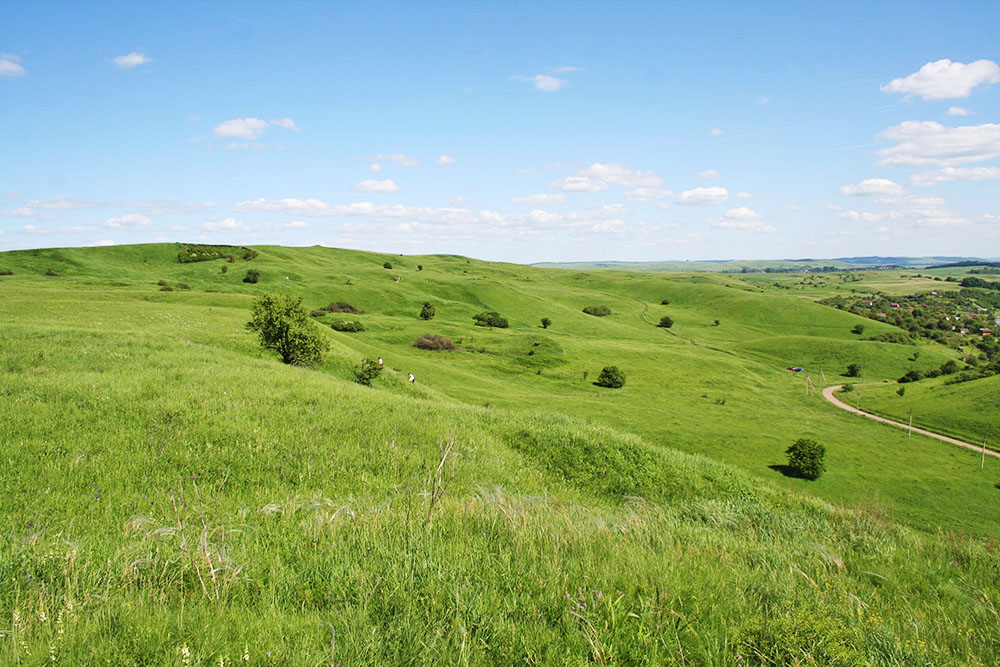
In total, Kasova Hora is home to more than 300 species of vascular plants, which is about 10% of all plants in Ukraine. The southwestern slopes of the protected tract are covered with drought-resistant steppe vegetation, dominated by feather grasses: hairy (Stipa capillata L.), beautiful (Stipa majalis Klokov), feathery (Stipa pennata L.), narrow-leaved (Stipa tirsa Steven), sage (Salvia L.), Austrian zinnia (Chamaecytisus austriacus (L.) Link), Lindemann's (Chamaecytisus lindemannii (V. Krecz.) Klaskova), Block's (Chamaecytisus blockianus (Pawl.) Klaskova), Podolsk (Chamaecytisus podolicus (Blocki) Klaskova) and Russian (Chamaecytisus ruthenica (Fisch. ex Woloszcz.) Klaskova), Hungarian stemless iris (Iris aphylla subsp. hungarica (Waldst. et Kit.) Hegi), Forest anemone (Anemone sylvestris L.), steppe aster (Aster amellus L.), swordwort (Inula salicina L.), Tatar crambe (Crambe tataria Sebeók), the only tumbleweed in Galicia, and many other plants.
But the northeastern slopes of Kasova Gora are more humid and, surprisingly, some mountain species feel good here, such as Anemone narcissiflora L, European or highest swimsuit (Trollius altissimus Crantz), white Lobelia's champignon (Veratrum album subsp. lobelianum (Bernh.) Arcang.), Phyteuma bells (Phyteuma L.), Tiled mowing grass (Gladiolus imbricatus L.), Siberian iris (Iris sibirica L.) and others.
Kasova Hora is home to perhaps the largest population of the rare Thistlewort (Carlina cirsioides Klokov), a Western Podillia endemic, which is also known in one of the relict habitats in Poland. This population is spread over several hills, which, unfortunately, are not currently part of the protected area.
Kasova Hora is a unique place in Galicia, as it is the westernmost location of the rare bristlecone fly agaric (Amanita solitaria (Bull.) Fr.), which is protected by law. In Ukraine, this mushroom was known only from its center and Crimea!
Among the animals of Kasova Gora, there are a number of rare ones that are listed in the Red Book of Ukraine and International Conservation Lists. In particular, the westernmost population of the Steppe Dybka (Saga pedo (Pallas, 1771), a large wingless predatory grasshopper, has been preserved here. In addition to the Steppe Dybka, the rare Bright Bumblebee (Bombus pomorum Panzer, 1805) is numerous on Kasova Hora, and the Red Data Book Moss Bumblebee (Bombus muscorum (Linnaeus, 1758) is also rare. Sailfish Podalirius (Iphiclides podalirius (Linnaeus, 1758) and Papilio machaon (Linnaeus, 1758), and the Odd Worm (Lycaena dispar (Haworth, 1802) are also common here. Insects on Kasova Hora are represented by a whole complex of steppe species.
One of the most interesting species of vertebrates on Kasova Hora is the Podilsky Slipstream (Spalax zemni (Erxleben, 1777), which was repeatedly found here during the Polish rule in Galicia, but unfortunately, there are no modern finds. Although, scientists of the Galician National Park do not lose hope for its discovery. The biggest problem is that Slipak leads a hidden underground lifestyle, revealing itself only in clumps of finely rugged soil on the surface. Such clumps are very common on Kasova Hora, but no animals have been found.
In general, Kasova Hora is an extremely valuable natural complex that requires comprehensive protection, which is provided by the
Halychyna National Park.
On November 29, 2017, a new ecological and educational route "Along the Reservoir - to Kasova Hora" (Ornithological Route to KasovaHora) was opened in the Halychyna National Nature Park to promote ecotourism and improve its development. According to the NGO Eco-Halych, this new environmental, educational and tourist attraction will allow local residents and visitors to better understand the beauty and richness of the Opillia region. The ecological and educational route begins near the parking lot of Burshtyn TPP, on the shore of the reservoir, where a significant number of waterfowl of various species gather during migration and wintering. There is an observation deck with information stands and benches for short-term rest. Tourists can use optical devices.
The next tourist stop is an observation tower near a colony of gray herons in the park's forest. The journey ends at the top of Kasova Hora, where an observation deck and information stands have also been built.

